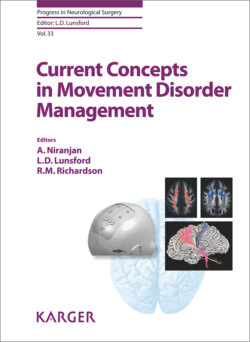Читать книгу Current Concepts in Movement Disorder Management - Группа авторов - Страница 58
Abstract
ОглавлениеPharmacological treatment is the cornerstone in the management of movement disorders. Although most available treatment options have no impact on the underlying process of each movement disorder, symptomatic therapies can significantly improve patient’s quality of life and level of disability. Here, we review the current knowledge on clinical symptomatic management of Parkinson’s disease (both early and advanced stages), essential tremor, dystonia, and chorea. Ideally, treatment should be carried out by specialists with reasonable experience in movement disorders, as it needs to be tailored for each patient depending on several appraisals, including but not limited to patients’ needs, compliance issues, potential side effects, caregiver support, and presence of comorbidities. When medications fail to improve patient’s disability, stereotactic surgery is a well-established option for most of these disorders.
© 2018 S. Karger AG, Basel
The rationale for most of the treatment interventions presented in this review relies heavily on the basal ganglia biochemistry; however, the clinical management of movement disorders varies widely depending on the underlying cause, predominant phenomenological presentation, degree of disability, and several individual, patient-based variables. Although cure can be eventually accomplished in selected disorders manifesting movement disorders, in most cases, the goal of treatment is to relieve symptoms, with no pretention of modifying the underlying pathological course.
In this chapter, we review the current practical available treatment options of the four most common forms of movement disorders.
